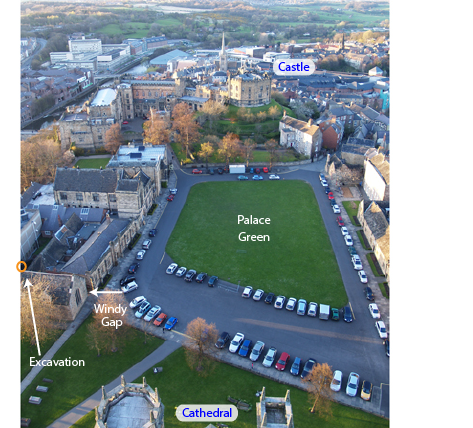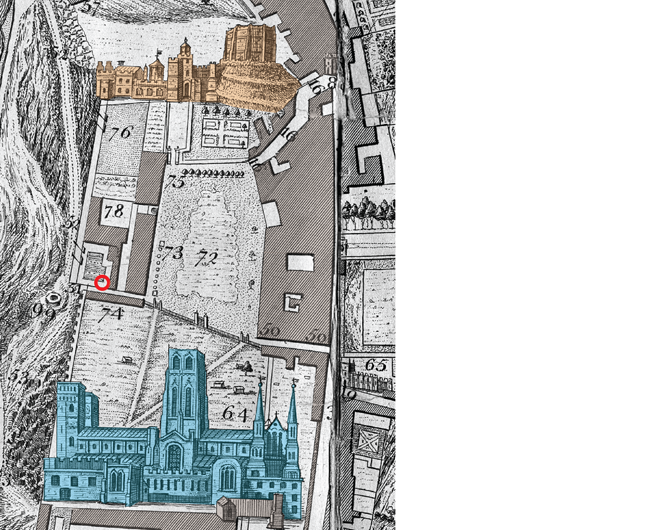This article is from the free online
Archaeology and the Battle of Dunbar 1650: From the Scottish Battlefield to the New World


Reach your personal and professional goals
Unlock access to hundreds of expert online courses and degrees from top universities and educators to gain accredited qualifications and professional CV-building certificates.
Join over 18 million learners to launch, switch or build upon your career, all at your own pace, across a wide range of topic areas.

 Palace Green, Durham, seen from the Cathedral © Alejandra Gutiérrez, Durham University.
Palace Green, Durham, seen from the Cathedral © Alejandra Gutiérrez, Durham University.
 Centre of Durham, showing the location of the discovery. Drawn by Alejandra Gutiérrez; base map © Crown copyright and database rights 2019 Ordnance Survey (100025252).
Centre of Durham, showing the location of the discovery. Drawn by Alejandra Gutiérrez; base map © Crown copyright and database rights 2019 Ordnance Survey (100025252).
 Extract from Thomas Forster’s 1754 map of Durham, showing: the Castle at the top (north), the Cathedral at the bottom (south), the zigzag block of stable buildings used by the Bishop and his household, and the garden to the west of the site of the burials (red circle) © Durham University Library: reference DUL NSR Planfile C 19/1.
Extract from Thomas Forster’s 1754 map of Durham, showing: the Castle at the top (north), the Cathedral at the bottom (south), the zigzag block of stable buildings used by the Bishop and his household, and the garden to the west of the site of the burials (red circle) © Durham University Library: reference DUL NSR Planfile C 19/1.






